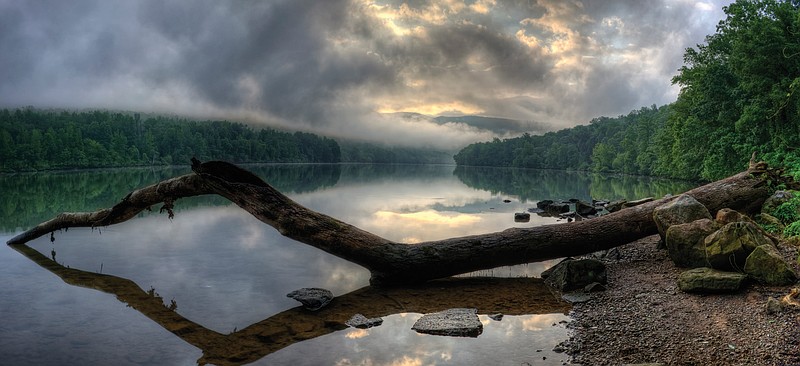Now that your cell phone can take photos almost as beautiful and clear as an expensive camera, anyone who is willing to learn can take up nature photography as a hobby.
Shooting the Four Seasons Workshop
Kevin Livingood will be co-teaching a quarterly photography workshop series sponsored by The O.A.T., "Shooting the Four Seasons," beginning May 4. The class will start around 9 a.m. at the Bachman Community Center on Signal Mountain with an hour of classroom instruction on photography fundamentals before the class drives/hikes together to the first of four photography locations. The class, which is limited to 12 people to offer more one-on-one instruction, will meet once each quarter to learn photography basics such as getting to the right location, angles, ISO and depth of field, and choosing a subject. The cost of the class is $45. For more information or to register, email Adam Noll of The O.A.T. at adam@outdooradventuretraining.com. For more information on Kevin Livingood or to view his work, visit www.livingoodphotography.com.
"I think nature photography is one of the more difficult aspects of photography," says local photographer Kevin Livingood. "Being in the right spot at the right time is easier said than done. You generally just have a small window of opportunity each day when the weather is right and the light is good."
Although it isn't always easy, with a few tricks of the trade and a bit of trial and error, you can begin to capture the beauty of nature just like the pros.
Here are 5 tips for fantastic nature photos:
1. Plan your image. "The final image needs to be visualized before arriving at your location," says Livingood. "Camera and lens are less important than vision."
2. Keep your head in the clouds. Cloud cover of about 30 percent often lends well to photography at sunset or sunrise.
3. Composition is three dimensional, and includes mood and texture. To add mood and texture to a photograph, Livingood recommends utilizing selective contrast and paying attention to shadows and composition. "A shadow can create a little mystery," says Livingood. "The mood of each location always changes as the light changes in nature."
4. Persistency, Persistency, Persistency. You must apply strong persistence
in seeking out the image and waiting on ideal conditions to be present. If you settle for incorrect lighting, the image will not be as beautiful as if you had waited until the perfect time - sometimes this means coming back to the same spot on another day.
5. Be on time. Most truly great nature photographs are taken within minutes of sunrise or sunset. During these times the light is softer, says Livingood, offering a nice warm sunrise/sunset glow in the sky. "The light is much more appealing when it comes in from the horizon as opposed to overhead," he says.
PLUS: 7 things (other than a camera) every nature photographer should take into the field.
Rubber boots or hip waders These are handy in case getting a great shot requires you to pass through some mud or water.Extra batteries/memory cards Don't miss out on the best shot of the day by running out of memory or batteries.Small tarp If you have to sit around waiting for good light, you'll enjoy it much more without a wet backside.Tripod Some of the best nature photographs are the ones that you jump into yourself.Plastic rain poncho This only costs a couple of dollars, but can save you thousands on camera gear in case of damage during an unexpected downpour.Bug spray It's hard to focus on your surroundings when you're getting bitten to death by mosquitoes. Enough said.Emergency repair kit Worst case scenario: You are on a once-in-a-lifetime safari to Africa and your camera falls and bounces off a rock. Be sure you have some basic repair items (duct tape, glue, rubber bands, etc.) for a temporary fix until you can get it to a shop.
